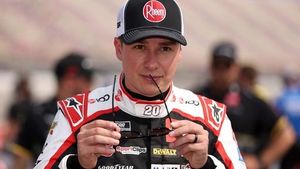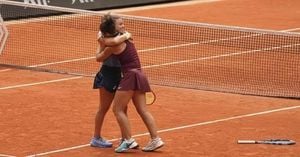Australia is currently witnessing a political landscape in turmoil, with leadership contests unfolding across major parties following a historic election on May 3, 2025. The Labor Party's recent electoral victory has not only increased its parliamentary seats but also ignited fierce internal battles among the Liberal Party, National Party, and Greens. These developments have been described as an 'extinction event of leadership,' as factions scramble to establish dominance amid the fallout.
In the wake of Labor's triumph, which saw a significant influx of new talent, existing power structures are being challenged. The Liberal Party, traditionally reliant on a balance between conservatives and moderates, finds itself in disarray without a clear leader. Angus Taylor is currently assumed to be the leader of the conservatives, yet his absence since election night raises questions about the party's future direction.
Meanwhile, Sussan Ley has emerged as a potential replacement for Peter Dutton as the leader of the Liberal Party. Ley's recent declaration that her leadership would enhance the party's appeal to women reflects a shift in strategy, especially as the party considers electing a female leader for the first time. In a surprising twist, Senator Jacinta Nampijinpa Price has defected from the Nationals to the Liberals, adding another layer of complexity to the ongoing leadership contest.
The National Party has faced its own setbacks, losing deputy leader Perin Davey in a Senate vote misadventure, which has reduced their representation from six senators to four. This loss raises serious concerns about party resources and stability, especially as the Liberal Party grapples with its identity and leadership.
On the other side of the political spectrum, the Greens are also in the midst of a leadership transition after conceding the Melbourne seat held by their leader Adam Bandt. Acting Greens leader Nick McKim has ruled himself out of contention, leaving Queensland's Larissa Waters, South Australia's Sarah Hanson Young, and NSW's Mehreen Faruqi as potential candidates to lead the party into the next phase.
In a surprising turn of events, the Labor Party, which has achieved gender parity in its ranks, is also facing internal strife. The influx of new female MPs has disrupted the existing power dynamics, particularly within the NSW Right faction, which is now under pressure to accommodate the changes brought about by the recent electoral success. The Victorian Right appears to have sacrificed Attorney-General Mark Dreyfus to make way for newcomer Sam Rae, while the NSW Right is countering by offering the scalp of Minister for Science Ed Husic.
As the Labor Party prepares for its first cabinet meeting since the election, the government has come under fire for dropping both Dreyfus and Husic from the new cabinet. This decision marks a significant moment in Australian politics, as it would result in the first government without a Jewish minister since 2010. Dreyfus is one of only three Jewish lawmakers in the government, and his removal has sparked criticism from various community leaders, including Jamal Rifi, who has called for Prime Minister Anthony Albanese to reconsider his decision.
Albanese, who hosted a public Labor Party meeting in Parliament House after the election, has yet to finalize the remaining cabinet appointments, with Health Minister Mark Butler indicating that Anne Aly is expected to be promoted to cabinet soon, potentially replacing Husic. This move would further highlight the shifting dynamics within the party, particularly in regard to representation.
Meanwhile, the political landscape is set to evolve dramatically after July 1, 2025, when the Labor Party will hold more seats in the Senate than the Coalition for the first time in this century. This shift will grant the Labor Party unprecedented power, as they will need to negotiate with either the Greens or the opposition to pass legislation. The implications of this new reality are significant for both the Greens and the Coalition, who will have to navigate a more complex political environment.
As the Liberal Party prepares for its leadership conclave, the atmosphere is thick with tension. The party is expected to convene in Canberra next week, where backroom negotiations and power struggles will likely unfold. The addition of Senator Price to the Liberal ranks complicates matters further, as her presence could alter the dynamics of the party's leadership race.
In the midst of these political upheavals, the Labor Party's internal conflicts are also brewing. The Right faction, which has historically maintained a firm grip on leadership positions, is now facing challenges from the Left and the Victorian Right. This power struggle has led to a reevaluation of who will hold key positions within the cabinet, as the party seeks to balance representation with effectiveness.
As the leadership contests continue, the outcome remains uncertain. With the stakes higher than ever, the decisions made in the coming weeks will shape the future of Australian politics. The Liberal Party, National Party, and Greens must navigate these turbulent waters carefully, as the electorate watches closely, eager to see how these power dynamics will play out.
In conclusion, the political scene in Australia is undergoing a seismic shift, with leadership contests and internal conflicts defining the current landscape. As parties grapple with their identities and the challenges posed by a changing electorate, the coming weeks will be crucial in determining who will emerge as leaders in this new era.



